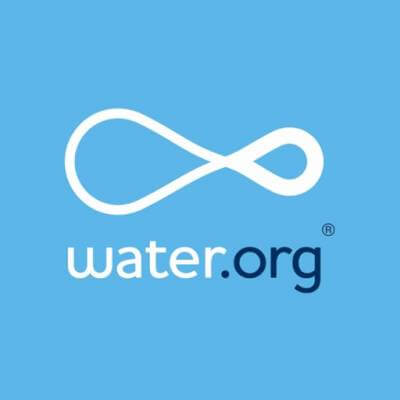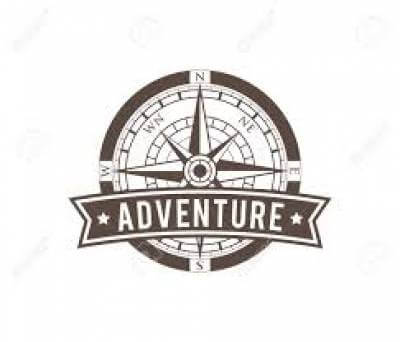Annapurna Circuit Trek 10 Days
The 10 Days Annapurna Circuit Trek takes you around the Annapurna Massif and offers experiences worth a lifetime. You’ll see and explore a wide variety of landscapes, cultures, and Himalayan terrains all in Annapurna Circuit Trek. En-route trekkers and hikers will be mesmerized by the majestic beauty of Mt. Annapurna (8091m), the 10th highest peak in the world including other snow-capped peaks. The route of the Annapurna Circuit is rated as the world’s top ten trekking paths. This challenging trek is a quest for experiences trekkers, beginner trekkers, and mountaineers enthusiasts and has been pulling hordes of trekkers from all around the world.
The terrain of the Annapurna region explodes with amazing natural beauty Buddhist and hinds the culture and traditions of the people living in the high mountains. We trek past remote valleys, high mountain small villages, alpine lakes, icy-cold glaciers, lush green forests, Beautiful Waterfall (Ruptse Waterfall), and raging mountain rivers.
The Kali Gandaki gorge, the deepest in the world, adds to another interesting highlight of the trek. The Annapurna Circuit trek is a great trekking destination in high Himalayan trails. This 10 Days trek is the best for adventure seekers and the curious ones, who want an extra punch of adventure and thrill in their journeys.
Sherpa Expedition and Trekking Team will ensure your safety and comfort at all times to make this an enjoyable adventure into the wilds of the Annapurna region.
ITINERARY
Day 1 : Drive from Kathmandu to Besishahar to Chame (2760m) Duration:8-9 hours.
Today’s road trip crosses several rivers, the Trishuli River – where you may see people rafting and the Marsyangdi River close to Chame. Our first destination is Besisahar and then finally to Chame. This is a good opportunity to take in the local scenery and get a feel for what lies ahead of your trek.
Day 2 : Trek to Upper Pisang (3300m) Duration: 4-5 hours.
Leaving Chame we pass through the village of Telekhu and on the trail have some wonderful views of the Annapurna Ranges and Mt. Pisang (6091m) until we have to re-cross a suspension bridge to the south side of the Marsyangdi River. After crossing the river we ascend and pass a pine-forest following the trail through the upper reaches of the Manang Valley before arriving at Pisang.
Day 3 : Trek to Manang (3500m) Duration: 5-6 hours.
Pisang is the start of our trek in the upper Manang area. Today we trek to Braga; a Tibetan village with its distinctive architecture and houses constructed one upon the other. One of Manang’s main attractions is its Gompa, being the largest in the Manang region. Manang is also popular with trekkers who stay here in order to acclimatize before heading to higher altitudes.
Day 4 : Exploration & Acclimatization at Manang.
Health and climbing professionals recommend that before heading to higher elevations that trekkers should spend some time acclimatizing. They also strongly recommend staying active. From Manang you will have some great views of Annapurna II; Annapurna III (7555m); Gangapurna (7454 m); and to the south to Tilicho (7132 m); and the Grand Barrier (a 7000m ridge) to the west; Chulu West (6583m) and Chulu East (6059m) to the north. In order to better acclimatize to these higher altitudes, we will trek up to Mt. Khangsar (3756m) and then return to Manang.Edit
Day 5 : Trek to Yak Kharka (4,000m) Duration: 4-5 hours.
Today we have a 10.4 km uphill trek to Yak Kharka passing through juniper forests and along the trail will see yak grazing in these alpine pastures. On the route, we also pass the only teahouse at Thorong Khola (river). Depending on the weather and trail conditions we may decide to go a little further and stay the night at Ledar.
Day 6 : Trek to Thorang Phedi (4,450m) Duration: 4-5 hours.
As we slowly ascend higher our body progressively gets used to the higher altitude. We follow along the east bank of the Jarang Khola (river) and view steep bluffs before reaching Thorong Phedi (meaning foot-hills). We may also decide to follow the trail for one more hour to High Camp (4800m). If we are fortunate we will see the famous blue sheep and possibly a snow leopard! This is also home to Lammergeyer (bearded vulture). There is also a belief legendary griffons are in this region!
Day 7 : Trek to Muktinath (3,800m) via Thorang-la Pass (5,416 m) Duration: 8-9 hours.
Today is probably going to be one of the most physically demanding days of the trek, hiking for between 8 and 9 hours. The higher altitude certainly makes it more difficult, and sometimes the strong winds in these upper regions make it harder too. Along the trail, we might pass sheep, yaks, and merchants transporting their goods by Yak or donkey. Once we reach Thorong La Pass we will have some truly amazing views of Annapurna, Gangapurna, and the eye-catching peak of Khatungkang (6484m). Crossing the pass we then descend about 1600 meters. Dhaulagiri (Dhavali Giri, meaning “White Mountain”) and the highest mountain that is entirely in Nepal is also visible. The trail is more undulating and quite easy before coming to Muktinath.
Day 8 : Trek to Jomsom (2,720m) Duration: 5-6 hours.
After leaving Muktinath we follow the trail through lush meadows, past orchards and streams. We also pass the village of Kagbeni before reaching Jomson located in the Kali Gandaki Valley. Kagbeni has a reputation for its intense horticulture industry.
Day 9 : Drive from Jomsom to Pokhara (8,50m) Duration: 7-8 hours.
Today we drive to Pokhara by local bus on a 7-8 hour journey, firstly arriving at Tatopani via Beni Bazaar and then on to Pokhara. Pokhara is famous for its lake – Phew Tal, and is popular with travelers. It has all the facilities of a small city. Your hotel will be by “Lakeside”. You may wish to watch the sunset over the lake and the mountains. It is a great way to end the day and relax.
Day 10 : Drive back to Kathmandu (1,350m) Duration: 6-7 hours.
Today we head back on a 6 to 7 hour drive to Kathmandu with many warm memories of Nepal and its unique culture, village people and geography. These memories will be with you for a long time - and as you look back on them they will put a smile on your face.
SERVICES
Cost Included In Your Package
- Kathmandu - Besisahar transfers on a local bus, Besisahar to Chame by Sharing Jeep Pokhara - Kathmandu transportation on a Local bus
- Pokhara to Kathmandu transportation by Tourist Bus
- One night hotel accommodation in Pokhara with breakfast
- Muktinath To Pokhara transportation by Bus or sharing jeep.
- Three Meals a day [Breakfast, Lunch, and Dinner] during the trek
- Accommodation on beautiful cozy tea houses as per the itinerary
- Annapurna Conservation Area Project (ACAP) entry permits and Trekkers Information Management System (TIMS) cards
- Experienced English-speaking, government licensed and ministry of tourism trained trekking guide with meals, accommodation, salary and insurance
- Strong experienced Sherpa helpers [porters] with meals, accommodation, salary, and insurance
- Assistant trekking guide for groups over 8 people with meals, accommodation, salary, and insurance
- Down jacket, four seasonal sleeping bag, duffel bag and trekking map (down jacket and sleeping bag are to be returned after trip completion)
- Comprehensive first aid medical kit carried by the guide / American medical association approved Oximeter
- Necessary paper works, all government, and local taxes, company service charges
- Oxygen meter to check your pulse and oxygen saturation and heart rate twice daily (Very useful to check Altitude Mountain Sickness(AMS) symptoms) which will ensure your health during the trek.
Cost Excludes
- Meals whilst you are in Kathmandu Lunch and Dinner.
- Meals in Pokhara.
- Nepal entry visa fee (easy to obtain the visa on arrival at Tribhuvan International Airport – Kathmandu). $30 USD for 15-day, $50 USD for 30 Days, and $125 USD for 90 Days visa.
- Your Travel and medical rescue insurance(recommended).
- International airfare.
- All the alcoholic and nonalcoholic, soup, tea, coffee, hot chocolate, cocoa, mineral water, extra food, cold and hot drinks on trek ( i.e. those you choose to purchase along the way and during evenings in the tea houses)
- All desserts & sweet things like chocolate, cake, pie, pudding.
- Hot shower and battery charging at the tea houses.
- Tips for the guide, porter, and driver (tipping is expected).
EQUIPMENTS
The following information will give you some idea about what you need to bring for the trek. It is important you do not forget the essential items, as this will determine your comfort and safety on the trek. Equally important is that you do not burden yourself with unnecessary equipment on the trek.
- Sleeping Bag (Sherpa Teams will provide but need to return after completing the trip)
- Duffel Bag (Sherpa Teams will provide but need to return after completing the trip)
- Fleece jacket or pullover
- Waterproof windbreaker or windcheater
- Thermal underclothes
- Rain poncho
- Down jacket (Sherpa Teams will provide but need to return after completing the trip)
- Fleece or wool trousers
- Sun hat or scarf
- Trekking pants (two pairs)
- Mittens or woolen gloves
- Hiking socks (several pairs)
- Moisture-wicking shirts, including t-shirts
- Trekking shoes or boots with spare laces
- Flip-flops or sandals for relaxing in the evenings
- Underwear (several pairs)
- Swimsuit or swimming costume
- Sunglasses
- Headlamp or flashlight/torch
- Sleeping bag (Sherpa Teams can provide this for you)
- Trekking poles (if desired)
- Hiking backpack with a capacity of at least 40 liters
- Small lock for your backpack
- Reusable water bottles (at least two liters)
- Water purification tablets or filtration device
- Wash towel
- Basic first aid kit
Toiletries (tissues, toilet paper, moisturizer, lip balm, sunscreen, sanitary pads, hand sanitizer, nail clippers, a small mirror, toothbrush, toothpaste, glasses, contacts, etc.)
GOOD TO KNOW
Accommodation
You will be accommodated in 3-star hotels in Kathmandu. During the trek, we will be staying at lodges/ teahouses. You may find comfort and better quality teahouses - having attached bathroom at lower levels- until you reach higher elevations, where the accommodation is more basic with bare necessities.
Meals during the trek
In Kathmandu, your hotel includes breakfast, whereas all meals (breakfast, lunch, and dinner) will be provided during the trek. A staple food of the Manang & Mustang regions is potatoes, oats, buckwheat, Sherpa stew, and Tibetan bread. Sherpa’s’ started farming potatoes when the first seeds were introduced to the region in the early 90s. There is a limited choice of food at higher elevations and except many potato dishes. Potatoes are high in carbohydrates – an excellent source of energy needed at high altitudes.
Transportation
We use a private car for sightseeing and for the airport to hotel pick and drop off. We use public transportation or local buses during the trek.
Physical fitness
This can be a challenging trek where you often have to walk 6-7 hours a day. You need past experience of hiking or trekking but if you have done any kind of trekking activities then it is always a plus! We have met people from all walks of life, shapes, and sizes who have completed the trek. The only difficult part is when altitude sickness strikes and the effect that it can have on your body. Before leaving for Nepal it is good if you can prepare yourself physically by increasing your stamina and oxygen intake.
Remember – The better prepared – the more enjoyable your trek!
MAP
PHOTOS/Videos
Departures
Select a departure month
Fill out the form below and a Travel Expert will reach out to create your perfect tour.
FAQS
I have never hike before, can I make it to Annapurna Circuit?
Yes, you can. No matter who you are, as long as you are reasonably fit, can walk for 5-6 hours a day and trek/hike a few uphill, Sherpa Expedition and Trekking team will support you to the fullest to transform your dream of standing at Annapurna Circuit into reality.
What is the best Season for trek to Annapurna Circuit Trek?
The pre-monsoon (February, March, April and May) and post monsoon (late September, October, November and December) are considered the best for the Annapurna Circuit trek as the weather conditions become favorable during this time, providing you with good visibility and a suitable atmosphere for Annapurna Circuit Trekking.
Is there an age limit for Annapurna Circuit Trekking?
No, there is no age limit for the trek to Annapurna Circuit but, you need to be in good physical shape and have a positive attitude. We also suggest you to prior to the excursion though we suggest you to please see your doctor and obtain necessary permission and advice, as well as medications for traveling in extreme altitude prior to the excursion.
What are the meals on the Annapurna Circuit Trekking like?
During trekking, you will be served meals in the teahouses. Typical meals are noodles, rice, pasta or potato dishes along with vegetables and egg/chicken/meat dishes. Other items mostly served as breakfasts include egg, pancake, bread, porridge, muesli, and toasts with peanut butter and honey.
What kind of accommodation will be provided during the Annapurna Circuit Trekking?
A teahouse trekking accommodation will be made for you for the Annapurna Circuit Trekking whereby you will be able to stay at tea house (Local lodge) and have wholesome food and neat and clean comfortable bed throughout your trekking journey. This form of arrangement also allows you to carry less baggage; you can trek at your own pace and enjoy the Annapurna panorama on your own schedule. It is also an eco-friendly way of trekking whereby trekkers can have more contact with the local people.
Are there toilet facilities at the tea houses? What opportunities will I have for shower during trekking?
Most of the teahouses on the Annapurna Circuit trail have squat toilet facilities but recently built lodges have western-style toilets as well. Nowadays, flush toilets are also being introduced with number of increasing foreign mountaineers each year. It is highly recommended to carry your own toilet paper and other required toiletries. Hot shower facilities are available. The most common type is a bucket shower, usual buckets with tap filled with hot water and placed in a shower room. Hot shower costs from US$ 2 to 5 per use and the price increases along with the elevation. Attached bathrooms and toilets are not available unless you book for a luxury lodge during the Annapurna Circuit trek.
What kind of clothes do we require for the trekking and is it possible to purchase it in Kathmandu before the start of the trip?
What you want to wear depends on you but we suggest you wear warm clothes during the Annapurna Circuit Trekking. A down jacket, thermal longs and top, comfortable trekking trousers, t-shirts, fleece, windproof jacket, hat, scarf, and gloves might be useful. There are numerous trekking shops in the Thamel area of Kathmandu where you can get all of these items in both local and branded stores alike. Sherpa Expedition and Trekking may also accompany and assist you if required.
Do I need to bring any bags for trekking? If yes, what kind?
During the Annapurna Circuit Trekking, you will be on a long journey for which you will need two bags to keep your belongings. A rucksack/duffle bag and a day bag for personal items. Sherpa Expedition and Trekking will provide you with a duffle bag (which is need to refund after the trek) that you can use throughout your entire journey and even afterward. These bags are durable and hence perfect for any kind of trekking journey. While the duffle bag will be carried by the potters, you will have to carry a day bag on your own. A day bag is a small backpack that has enough room for everything you will need on a day hike such as lunch, water, extra clothing and perhaps a few personnel items like camera, battery chargers, etc.
Do I need to bring any personal equipment like sleeping bags, down jackets, Trekking poles etc?
If possible, we suggest you bring your own equipment. However, sleeping bags and down jackets will be provided to you by Sherpa Expedition and Trekking. With regards to trekking poles, if you are used to walking with it then take them with you, as you will probably find them useful especially on the way down. They are not essential though and the walk is manageable without them. It is mostly a personal preference. If you prefer to take the trekking poles with you on the trekking then you can either bring your own pole or buy it from numerous options available in Kathmandu itself.
Is it possible for me to store extra clothing that I will not need?
Yes, if you have a bag of extra clothing for when you return from the trekking, you will be able to store it safely in Kathmandu Sherpa Expedition and Trekking office. The storage facility is provided by most hotels and lodges in Kathmandu or you can also store it in our office for the duration of the trekking.
What problems can arise on high altitude?
Our itinerary has been specially tailored to prevent any kind of AMS (Acute Mountain Sickness) while moving up to higher altitudes. Normally, altitude sickness starts from 3,600 meters and above. You will be trekking at a relatively slow and gradual pace as part of the acclimatization process. Cut off caffeinated, alcoholic and smoking items. Drink at least 4 liters of water a day. Trek slow. Don't skip the acclimatization days. Better to continue with Diamox (if any symptoms show up). Drink Garlic Soup. In the higher elevation, there is less oxygen in the air and this is more so while crossing high passes. Our expert guides will advise you on how to avoid AMS and treat it when/ if required.
Do I need insurance for Annapurna Circuit Trekking?
Make sure to have both medical and evacuation insurance before coming to Nepal for Annapurna Circuit Trekking. You should be careful in choosing a policy while traveling to a Himalayan country like Nepal as some insurance companies may make special exceptions for adventure travel. If you are confused about the insurance, please inform us and we will help you. It is usually better to arrange your insurance in your country before travel.
How long do I need to walk per day during my trek to Annapurna Circuit?
The trekking will be 5-7 hours a day depending upon the landscape and destination.
How long will it take to reach Annapurna Circuit?
It takes 6 to 20 days to reach Annapurna Circuit Thorong La Pass depending upon the mode of transportation and packages of Sherpa Expedition and Trekking offers.
How safe is Annapurna Circuit Trekking?
We at Sherpa Expedition and Trekking Team always have the safety, comfort, and satisfaction of our valued customers as our foremost priority at all times, and we assure you a wonderful and unforgettable time with us in our beautiful country. Sherpa team members of Sherpa Expedition and Trekking will be carrying all the necessary gear, equipment, and first aid kits and they have extensive first aid training. If a trekker falls sick on high altitude, the leader will decide whether to continue the trek. In case of emergency, Sherpa Expedition and Trekking have a rescue helicopter to bring you back from the higher elevation. Moreover, Sherpa Expedition and Trekking also provides oximeter to monitor the oxygen level at high altitude and offers regular health check-up facilities.
What are the mode of transportation?
You can either trek on foot or by a flight. Sherpa Expedition and Trekking offer exciting and reasonable flight to Pokhara for 4 days and 10 days. Sherpa Expedition and Trekking can also customize your tour as per your necessity.
What if my flight to and from Pokhara is cancelled or delayed?
The flights are usually regular between September and May. But due to high altitude, bad weather and unforeseen technical issues, you may experience a delay or cancellation of the flight. On the occurrence of such events, Sherpa Expedition and Trekking tourist bus will be arranged.
What is the luggage limit for porter and flight to Pokhara?
Sherpa Expedition and Trekking will provide one porter for two trekkers to carry 20 kgs of luggage (maximum 10 kg for each trekker). Please be sure your porters are not overloaded because they do not carry only your equipment but also lift your spirit to reach new heights, and your love, affection, and generosity can be the reason for them to work hard to take you to your destination. However, the weight limit on flights to the Annapurna region, basically to Pokhara is a total of 20 kgs including hand bag and you need to pay an extra amount per kg for the excess baggage. Sherpa Expedition and Trekking pays up to 5 kgs of extra baggage making your total to 20 kgs with your hand bag.
What types of liquid do I need to drink at high altitude?
Garlic soup is a must while trekking. Sherpa Expedition and Trekking recommend trekkers to drink green tea, lemon tea, hot lemon ginger tea and drink at least 2-4 liters of water a day. However, it is better to avoid alcohol and alcoholic beverages, caffeinated items, and hot-chocolates at high altitude.
I am a vegetarian. Am I supposed to get enough meal on my trek?
Sherpa Expedition and Trekking won’t recommend non-veg items because the meat in such places may not hygienic and healthy. Sherpa Expedition and Trekking also encourage to avoid dairy and cheesy items and strongly suggest not to consume them during the trek. So, our packages are suitable for both vegan and vegetarians.
Do I need to tip my porter and guide?
Your guide and porters are a big reason why you got a chance to feel something very few can have. Apart from guiding and carrying your necessities and being mindful of your safety, they want to see you happily succeeded more than anyone like family and help you successfully complete the trek safely. So, your tips reflect gratitude towards them. So, tipping is a recommended culture for porters and guide in Nepal as a gesture of thankfulness.
Can I buy the gear in Nepal and sell it afterwards?
Sherpa Expedition and Trekking will introduce dozens of shops selling knock-off gear in Kathmandu. You can also barter those gears at the knock-off places but be sure you keep the receipt safely. Moreover, you can rent the needed gears if you do not want to buy them.
Is there Wi-Fi on the trek?
Yes, most guesthouses offer Wi-Fi, for a small charge. it cost USD$5 per day.
Are there ATMs available during the Annapurna Circuit Trekking?
ATM services are available only in Pokhara & Jomsom. However, the services might not work or run out of cash. Therefore, we suggest you carry a small amount of money to buy snacks, etc during the trekking.
Will I be able to charge my batteries during trekking in the Annapurna Circuit?
Most of the tea houses/ lodges have electricity whereby you will be able to charge your iPod or camera batteries. Please note that lodges/tea houses will charge you some extra money for the services. The fee may vary from 1 USD to 5 USD per hour.
Latest Traveller’s Reviews
Travel experiences of our clients who recently returned from their trips.
100%
Based On 23 Reviews
Luisella Mandrile
Canada
August 8, 2024
Remarkable Trekking Service
Sherpa Expedition & Trekking offered remarkable service on our Annapurna Circuit trek. The team was professional and dedicated, ensuring that every detail of the trek was handled with care. The guides were experienced and provided valuable support, helping us navigate the trek’s challenges and acclimate to the altitude. Their thorough planning and focus on our well-being made the journey smooth and enjoyable. Sherpa Expedition & Trekking’s outstanding service and expertise contributed to a truly memorable trekking experience.
JanXada HaMdaRd
Netherlands
July 17, 2024
Superior Organization and Support
Sherpa Expedition & Trekking provided superior organization and support on our Annapurna Circuit trek. The team’s attention to detail and professionalism were evident throughout the journey. The guides were knowledgeable and friendly, offering excellent support and insights into the trek and local culture. Their ability to handle all logistics and ensure our comfort and safety made the trek enjoyable and successful. Sherpa Expedition & Trekking’s commitment to quality service and expert support made this trek exceptional.
Frank Josiah
United States
July 3, 2024
Excellent Trek
Our Annapurna Circuit trek with Sherpa Expedition & Trekking was excellent, thanks to their professional guides. The team’s expertise and organizational skills ensured that every aspect of the trek was well-managed. The guides were experienced and provided thoughtful support, making sure we were comfortable and safe throughout the journey. Their insights into the region and their meticulous planning contributed to a smooth and rewarding trek. Sherpa Expedition & Trekking’s excellent service made this adventure truly memorable.
People Considering This Package Right Now Check availability
























